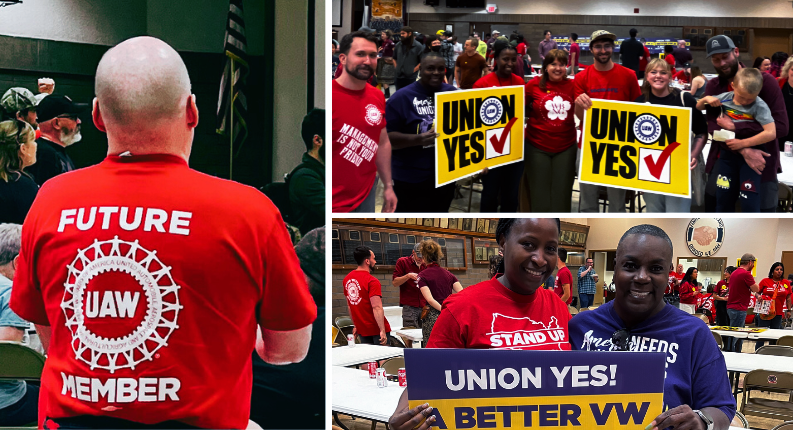When workers have a seat at the table, their voices strengthen local economic development and helps ensure fairness, quality jobs, and long-term sustainable growth.
Labor unions have been responding to the unfair policies of the last several decades by taking action to shape local economic development policies/issues.1 In partnerships with employers, community organizations, and local governments, unions have helped revitalize local economies by saving and expanding family-supporting jobs. Below are some examples of these win/win partnerships.
Innovative Programs to Keep Jobs and Revitalize Regional Economies
A partnership between the Wisconsin State AFL-CIO and the regional business community produced the Wisconsin Regional Training Partnership (WRTP), which helps prevent plant closures, provides job training to current workers, and trains and places low-income, disadvantaged members of the community into jobs in a variety of sectors. In one year, the WRTP helped save four plant closures, preserving more than 1,000 jobs.2 Each year, the organization places roughly 500 residents, largely workers of color, into jobs with starting wages averaging nearly $15 per hour.3
A similar regional economic development program was created in 1999 in Western New York through a meeting of local unions, facilitated by Cornell University’s School of Industrial Relations. The initiatives of the Economic Development Group (EDG) include promoting the region to potential employers, training urban youth in construction occupations, converting abandoned buildings into single-family housing units, and channeling public investments into the creation of good-paying jobs.4 The EDG also helps support the regional economy by securing low-cost alternative energy sources. The organization recently converted a gas-powered plant into a biomass-fueled facility that uses willow trees and other locally-grown energy crops.5 The plant provides clean, low-cost energy to Buffalo’s workplaces and residents.
Preserving Manufacturing Jobs through Partnership
In response to the decline of the steel industry in Western Pennsylvania in the mid-1980s, steelworkers, religious leaders, and mayors created the Steel Valley Authority (SVA) to save these valuable jobs. Since its inception, the SVA has helped to create or save 10,000 manufacturing jobs6 by advising companies on how to save the business and become more productive and energy-efficient, offering training to workers, and converting contaminated brownfields into useable manufacturing sites, among other services. In 2008, the State of Pennsylvania charged the SVA with managing an initiative to save 70 at-risk auto suppliers by providing them with turnaround expertise, worker training, and capital financing. The SVA also started the Heartland Capital Network with the United Steelworkers (USW), which directs funds from union-sponsored pension plans into investments that help secure and create quality jobs.
Investing Worker Pension Funds to Rebuild Communities
In June 2006, the AFL-CIO launched the Gulf Coast Revitalization Program, a $1 billion housing and economic development program. The initiative aims to create low and moderate-income housing, hospital and health facilities, job training services, and thousands of high-wage union jobs throughout the region. The program is designed to encourage additional private ventures in the Gulf Coast, and is financed with union pension funds. Building trades unions created the Gulf Coast Construction Career Center to address the construction industry’s critical need for skilled workers throughout the Southeast.
The Gulf Coast program builds on the success of similar AFL-CIO investment strategies to develop affordable housing in Chicago and to help New York City recover from the devastating terrorist attacks of September 11th. Union pension funds invested $750 million in post-9/11 New York.7
Download this page as a PDF: Unions and Other Community Groups Benefit Local Economic Development




